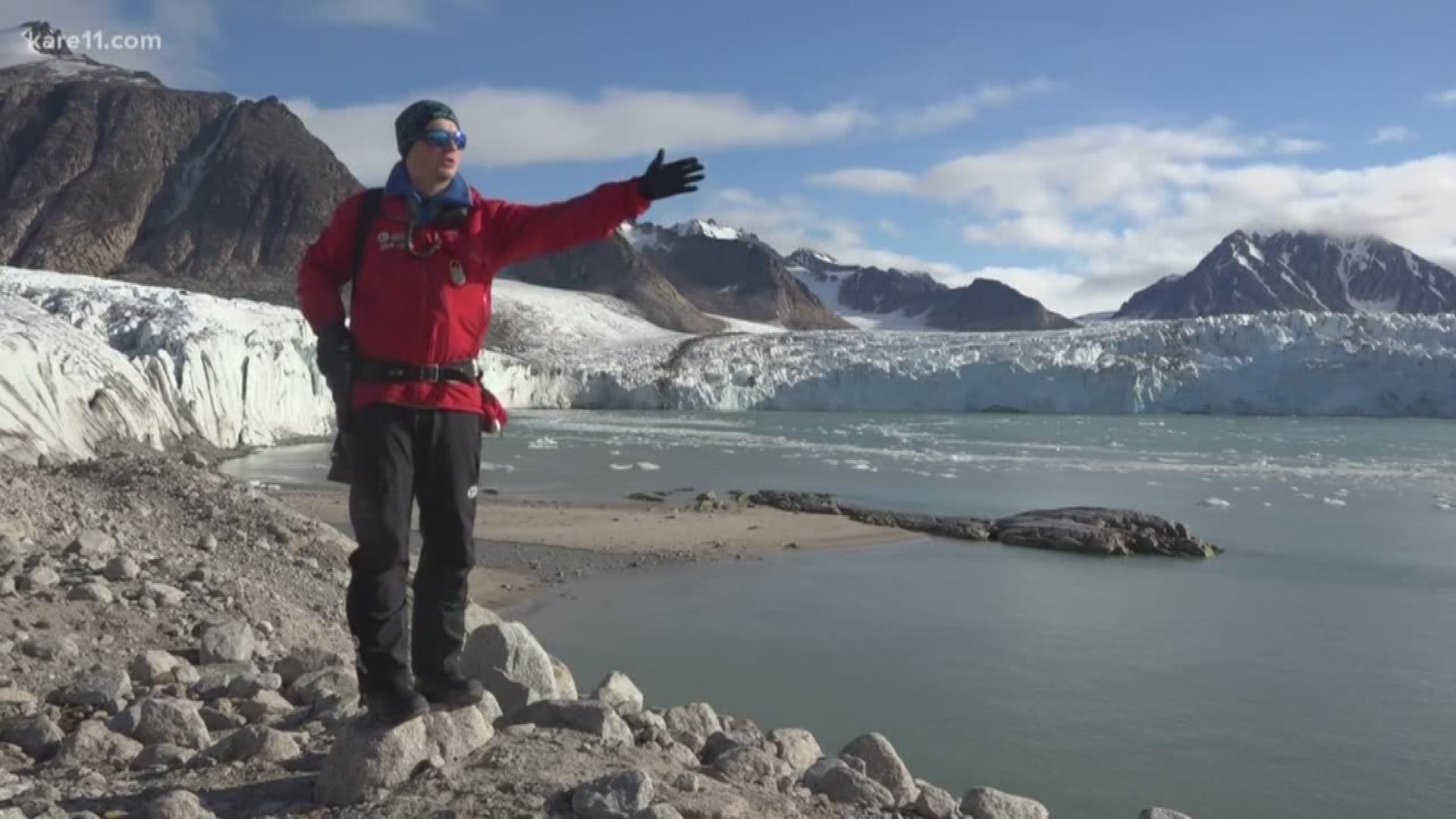MINNEAPOLIS, Minn. - Our planet’s Arctic is warming at twice the rate of the rest of the globe.
But Svalbard, which is a cluster of sparsely populated islands east of Greenland and far north of mainland Norway, is warming at four times the rate of the rest of us.
Why is Svalbard, of all places, changing so quickly? After all, these islands appear to be icy and cold all the time.
We asked Dr. Kim Holmen, the international director of the Norwegian Polar Institute, who has been studying this area for decades.
"The main mechanism is that it's at the end of the Gulf Stream. The world's oceans are becoming warmer," Holmen said.
The planet's oceans are absorbing 90 percent of the extra heat from our extra global warming. That heat is transported, almost like on a conveyer belt, to Svalbard, where the Gulf Stream "dead-ends." That causes a temperature change, which can be bad for the Arctic's animals.
“The winter temperatures have changed by more than 10 degrees in the last 30 years.” Holmen said.
One of the ways we can figure out ancient climate is through sampling ice, or "ice cores."
Glaciers deposit ice over many hundreds of thousands of years and trap air bubbles. These air bubbles act like snapshots of our atmosphere frozen in time. Some cores are over a thousand years
“The oldest cores we have drilled here are 1,400 years old,” Holmen said.
Those ancient cores tell scientists like Holmen that places like northern Svalbard have never been as warm as they are now.
"Climate everywhere on the planet has always changed and will always change," Holmen said. "But the rate of change and the levels of change are such that the Arctic will not be the Arctic we know.” .
One thing that helps to regulate the rate of climate change in Svalbard is ice. Lack of ice is visibly changing Svalbard along with the rest of our planet's polar regions.
We know a thing or two about ice in Minnesota, but as much as we complain we maybe deal with it for less than half the year. In the Arctic, ice was a year-round way of life - but that might no longer be true.
Svalbard is almost 60 percent covered in ice. The magnificent colors you see in it are a sign of their age.
“The less air, the more blue you see.” Holmen said about ice's coloring.
The beautiful ice in Svalbard took a long time to build up, and we're melting it in a very short period of time.
Many of the once large glaciers in Svalbard are melting at a pace faster than anywhere on the planet.
Arctic Guide Jan Ole Blombi is one of the few who see these changes firsthand. "You can see these glaciers here and you can see the moraine back there and how far out into the ocean it was. It went all the way out there on both sides. It was a really big glacier." Blombi said.
The moraines are the visible lines of where glaciers used to be. So you can actually see where glaciers used to be on the sides of mountains in Svalbard.
Ice does more than look dramatic. It helps keep Svalbard cold, or at least it used to. Just like if you had a glass of water and you put ice in it, it will cool down. If Svalbard loses its ice, it will not stay cold enough to support the animals that call Svalbard home.

